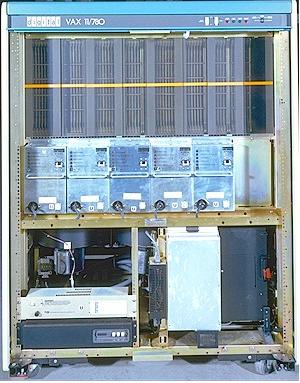| |
|
|
|
|

| |
|
|
 |
| |
|
|
|
|
|
| |
|
|
 |
|
The
VAX Architecture Committee began work on a
computer with 32-bit architecture; the goal: to
build a machine which was culturally compatible
to the PDP-11-- but with increased address space.
The result: VAX, the "Virtual Address
eXtension" of the PDP-11's 16-bit
architecture to 32-bit architecture. The new
computer required a new operating system so VMS,
the "Virtual Memory System" was
developed simultaneously. Shown here is an inside
view of the first VAX model (the VAX-11/780). |
|